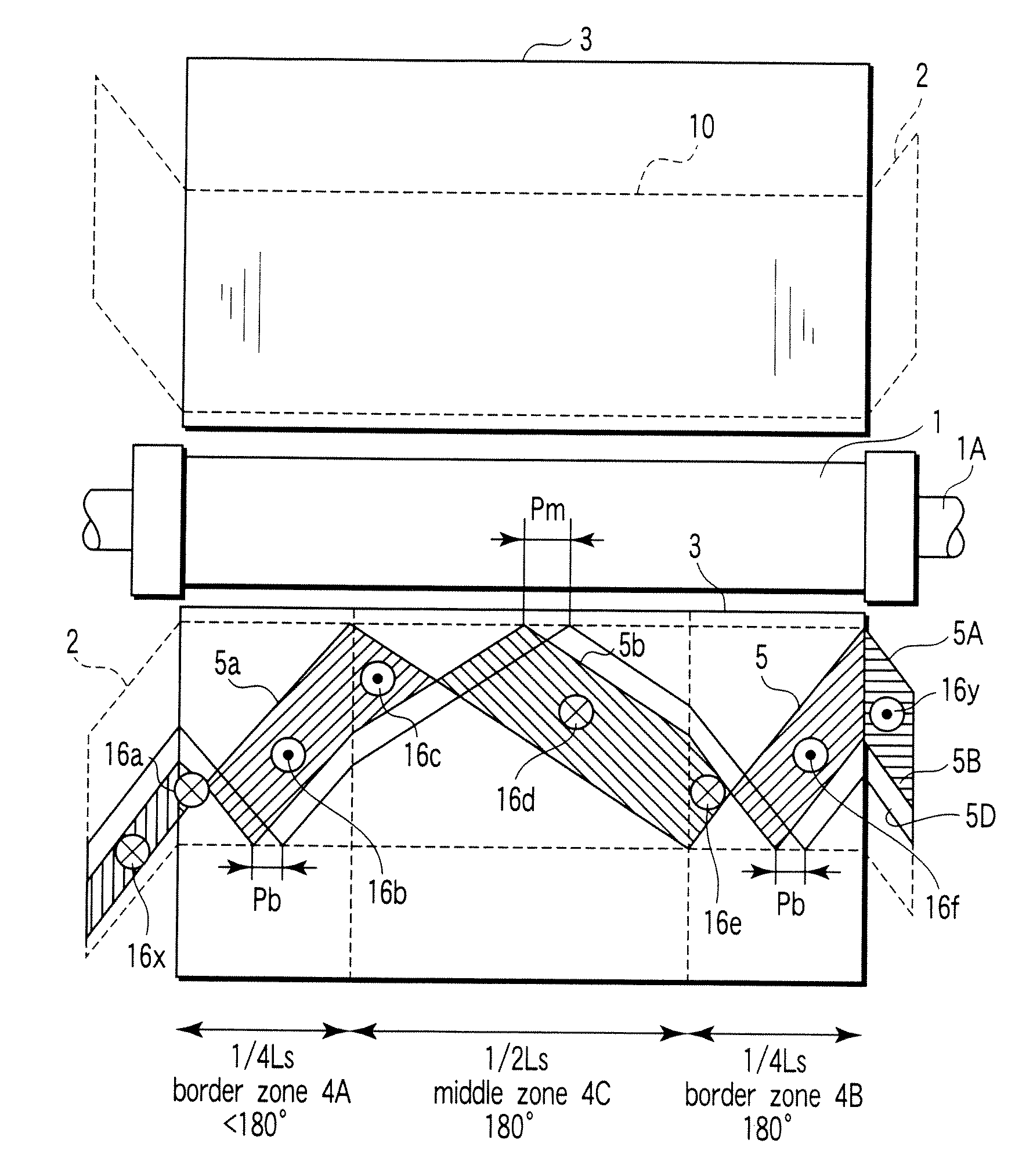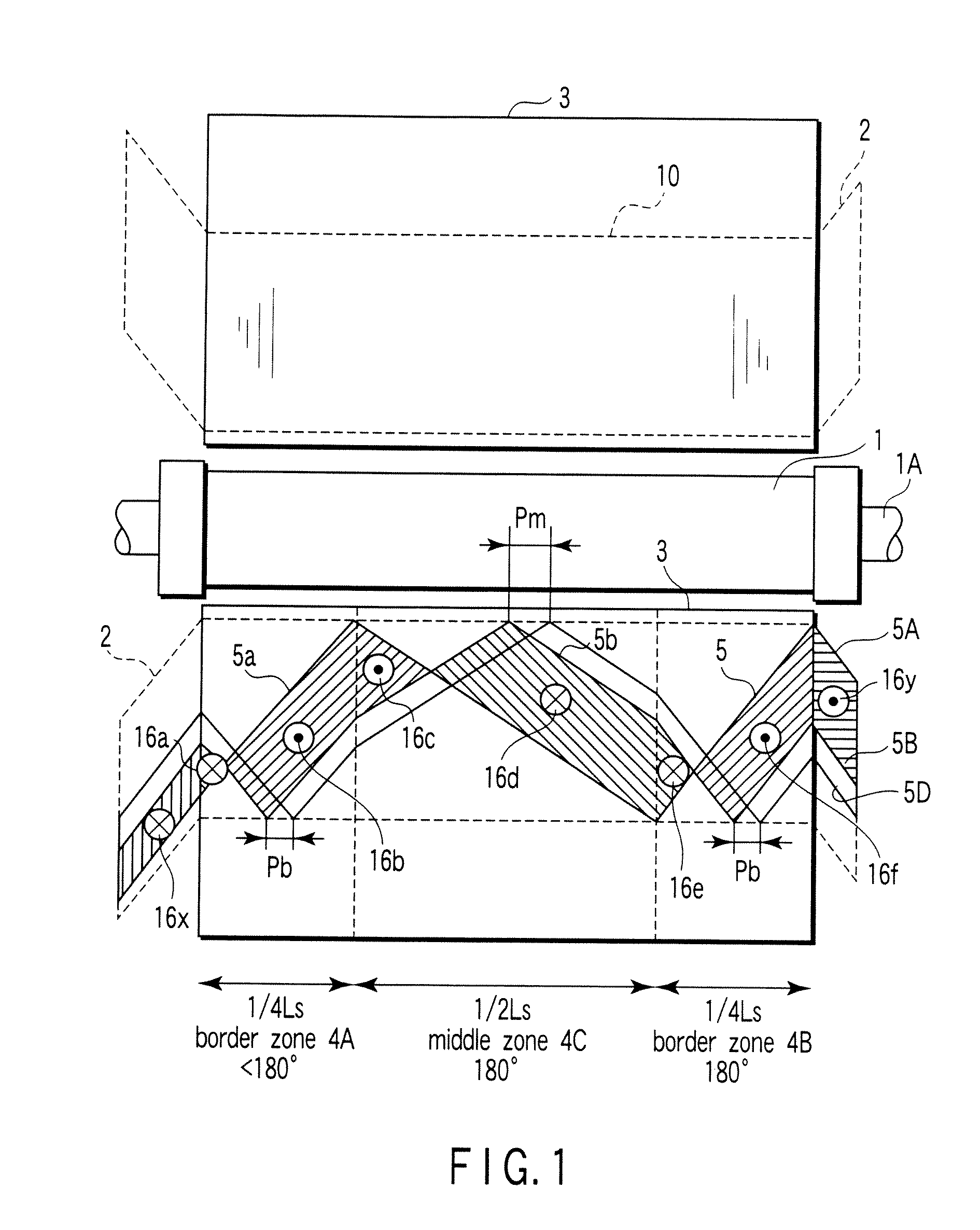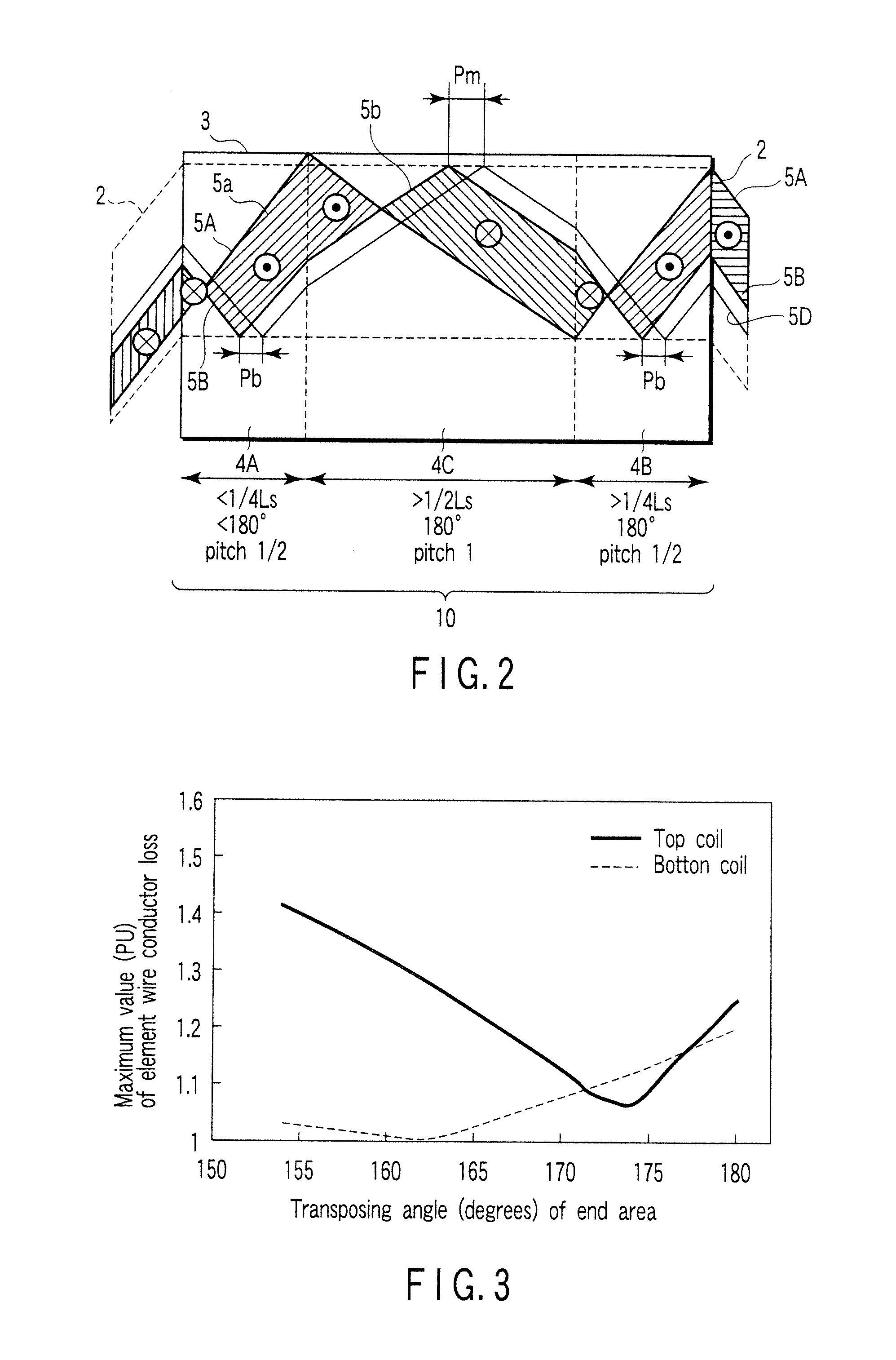Armature winding of electric rotating machine, stator of electric rotating machine and electric rotating machine
a technology of electric rotating machines and windings, which is applied in the direction of windings, dynamo-electric components, and magnetic circuit shapes/forms/constructions, etc., can solve the problems of increasing current loss and heat generated inside the element wire conductor pair, so as to suppress the increase in loss and local overheat of the armature windings, the effect of reducing the circulation curren
- Summary
- Abstract
- Description
- Claims
- Application Information
AI Technical Summary
Benefits of technology
Problems solved by technology
Method used
Image
Examples
first embodiment
[0062]First, a first embodiment will be described with reference to FIG. 1. The configuration of the electric rotating machine according to the first embodiment of the present invention is shown in FIG. 1, which is composed of: a rotor 1; a stator core 3 having a plurality of winding slots 10 extending along a rotating axis of the rotor 1; and an armature winding 2 embedded in the winding slots 10. The armature winding 2 is equipped with at least one armature winding bar composed of a number of stacked element wire conductors or strands. For example, as shown in FIG. 25A, the armature winding bar is composed of top coil unit 2c and bottom coil unit 2d stacked in the slot 10 having a wedge 3A provided at an opening of the slot 10 for holding the coil units 2c and 2d in the slot 10.
[0063]In the embodiment of FIG. 1, Three strands or conductors 5A, 5B and 5D provided in the armature winding 2 are continuously twisted along the extension direction in the stator core 3 at portions provid...
second embodiment
[0082]Next, a second embodiment according to the present invention will be described with reference to FIG. 7. A description is omitted with respect to the constituent elements similar to those shown in FIG. 1.
[0083]In an element wire conductor 5, a 180-degree transposition is made in the range of ¼Ls on the left end border zone 4A of a stator core 3, and further, a 180-degree transposition is made in the range of ½Ls at the middle zone 4C. Furthermore, the transposing angle A in the range of ¼Ls at the right end border zone 4B is greater than 180 degrees, and is set at 190 degrees, for example.
[0084]In the first embodiment, the transposing angle of the left end border zone (core border zone 4A) of the stator core 3 is smaller than 180 degrees. In the second embodiment of FIG. 7, the transposing angle of the right end part (core border zone 4B) of the stator core 3 is set to be greater than 180 degrees in turn. With such a configuration, an interlinking magnetic flux 16e is reduced ...
third embodiment
[0092]Next, a third embodiment according to the present invention will be described with reference to FIGS. 12 to 13. FIG. 12 is a view showing a relationship between an element wire conductor 5A and an interlinking magnetic flux 16a to 16f, 16x and 16y. FIG. 13 shows a side view of a configuration in which a conventional stator core is provided with a subsidiary core portion 14 and a ventilation duct 4 in a stator core 3.
[0093]The subsidiary core portion 14 is provided at the illustrative right end part of the stator core 3 such that a core space factor of the portion 14 is greater than those of other stator core portions. An element wire conductor 5A is continuously twisted toward the extension direction of a wiring slot 10 and is formed so as to be transposed at 540 degrees at an active portion in the wiring slot 10. The element wire conductor 5A and the other conductor 5B forming a conductor pair is short-circuited at both sides of an armature winding 2 that protrudes to the out...
PUM
 Login to view more
Login to view more Abstract
Description
Claims
Application Information
 Login to view more
Login to view more - R&D Engineer
- R&D Manager
- IP Professional
- Industry Leading Data Capabilities
- Powerful AI technology
- Patent DNA Extraction
Browse by: Latest US Patents, China's latest patents, Technical Efficacy Thesaurus, Application Domain, Technology Topic.
© 2024 PatSnap. All rights reserved.Legal|Privacy policy|Modern Slavery Act Transparency Statement|Sitemap



